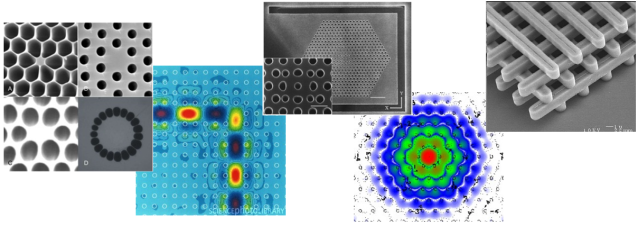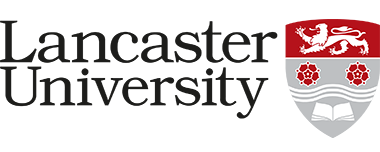PHOTONICS CRYSTALS
KEY FACTS
Devices
- Resonant Cavities
- Waveguides
- Optical Fibres
- MUX\DEMUX
- Power and Beam Splitters
Applications
- Communications
- Satellite
- Radar
- All Optical Signal Processing
People involved
- Five
Resources
- 3D simulation tool
- multi-core workstations
- grid
Main journals
- IEEE Microwave and Wireless Components Letters
- IEEE Trans. on Electron Devices
- IEEE Photonics Technology Letters
- Optical and Quantum Electronics
- Applied Physics
- International Journal of Electromagnetic Wave Applications
Main conferences
- SPRC Annual symposium
- OWTNM Optical Waveguide Theory and Numerical Modelling
- CEM-TD Computational Electromagnetic Time Domain
- SIOE Semiconductor and Integrated Optoelectronics
Why it is important
Photonic Crystals (PhC), also known as Photonic Bandgap materials (PBG), consist of different dielectric or metallic materials which present a periodic pattern in one or more space dimensions. Thanks to this space periodicity, PhC can handle the electromagnetic radiation in a way that is not possible with the conventional technology. PhC Technology
- can be used to design a wide variety of devices such as waveguides, resonant cavities, polarising beam splitters, power splitters, multiplexer, demultiplexer, filters, and many more;
- can be used in a wide range of frequencies spanning from microwave to optical frequencies;
- can be used in a range of very different fields such as Telecommunication, All-Optical Signal Processing, Terahertz, Particle Physics, and many more.
Our mission
- Design and fabricate innovative PhC devices for a wide range of applications;
- Develop new analytical and numerical tools for the analysis and design of PhC based devices;
- Exploit the PhC technology for the design of innovative device for Particle Accelerator Techology.
What we did
- Developed a number of analytical and numerical tools, such as the Finite Difference Time Domain (FDTD) method, the Multi-resolution Time Domain (MRTD) method, the Finite Volume Time Domain (FVTD) method, for the analysis and design of PhC based devices;
- Design of PhC based devices such as resonant cavities, waveguides, filters, splitters, MUX/DEMUX, and many more for a number of very different fields such as Telecommunications, All-Optical Signal Processing, Particle Accelerators, and more.
What we will do
- Development of innovative, highly efficient and accurate analytical and numerical tools for the analysis and design of novel PhC based devices;
- Design and fabrication of PhC based devices for particle accelerators;
- Design and fabrication of PhC based devices for the new emerging field of Dielectric Lased Acceleration (DLA).
Who we are looking for
Students that like interdisciplinary approaches, full of initiative and ready to overcome new frontiers. Electronics, physics, electromagnetism, materials science, chemistry, basics of programming are only some of the required backgrounds.









